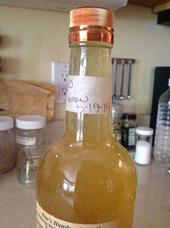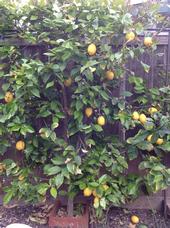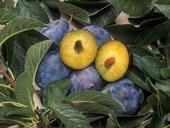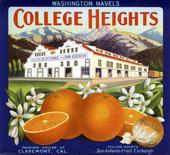- Author: Cynthia Kintigh

One of the hazards of contributing to a shared blog, is that one forgets to post. So in this case, while I said in my last post that we would re-visit the lemoncello in mid-May, here it is September. Time flies.
The lemoncello is a huge success, we've been enjoying it on the hot summer afternoons that are plentiful in Davis. And here's how I got from pith to pleasure . . . .
The first steps in the lemoncello process were documented in this early Spring post. The recipe calls for 6 weeks of steeping the lemon zest in the alcohol in a cool, dark...
- Author: Cynthia Kintigh

It's early spring, and that means one thing: I am once again drowning in lemons. This year with our tree well established, we had a bumper crop. Even as an espalier, our tree produces more lemons than we can use. And as anyone with a lemon tree knows - it's almost impossible to give away lemons. Lemons are the zucchini of winter.
With a pantry full of marmalade, a batch of salted lemons preserving, and all of the copper gleaming, I was looking for a new way to use my harvest. A...
- Author: Alec Rosenberg

Only in California could arid land be converted into the nation’s salad bowl.
In the late 1800s, University of California researchers discovered how to remove salts from the soils of the Central Valley, turning it into one of the most productive agricultural regions.
UC researchers continue to play a key role in agriculture today, keeping California the nation’s leading agricultural state, from dairies in Tulare to nut farms in Newberry Springs.
A new brochure highlights the breadth of UC Agriculture and Natural Resources’ impact. UC guidelines have helped farmers boost broccoli production. UC scientists have developed sweet-tasting citrus and strawberries to meet consumer demands. UC certifies...
- Author: Janet L. White

Even though U.S. consumers routinely buy and eat genetically engineered corn and soy in processed foods — most are unaware of the fact because the GE ingredients are not labeled.
When consumers are asked in surveys whether they would buy genetically engineered (GE) produce such as fruit, most say they would not buy GE produce unless there were a direct benefit to them, such as greater nutritional value.
Consumer reluctance to buy GE fruits and nuts is a major obstacle to commercialization of these crops in California. To date, no such crop has been brought to market in the golden state, although many have been researched and are being developed.
Yet with continuing invasions and spread of...
- Author: Rachel A. Surls

Over the years, I’ve heard quite a few people, including my parents, talk about getting an orange in their Christmas stocking when they were children. Apparently, this custom dates back many years. It was a special treat, in a time when oranges were expensive.
An interesting book called “Orange Empire: California and the Fruits of Eden” by Douglas Cazaux Sackman tells the story of how oranges went from being an occasional treat to a mainstream part of the American diet. In fact, Los Angeles was once the center of the “Orange Empire” which developed into a massive industry in California.
Oranges were brought by the Spanish as they settled the missions, and the first sizable grove in Alta California was planted at the San...



